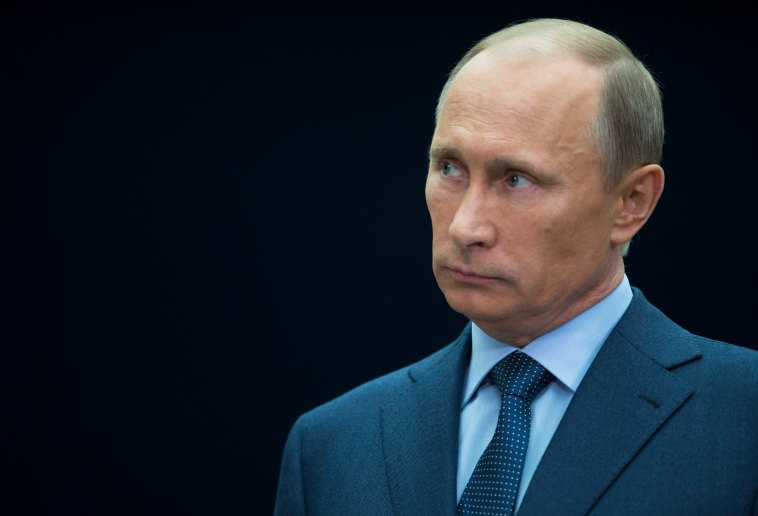The Obama administration’s approach to events in Ukraine and the approach favored by the president’s critics are based on the same faulty premise. Both parties assume Russian President Vladimir Putin has firm control of pro-Russian forces in Ukraine. Therefore, the right combination of coercion and threats will convince him to order a retreat.
Videos By Rare
However, while pro-Russian forces in Ukraine undoubtedly enjoy Putin’s support, it is not clear that these same forces would stand down if Putin gave the order to do so. Worse, any control that Putin does have rapidly diminishes as the violence escalates.
As often happens, U.S. policymakers feel the need to do something. The policies being debated in Washington fall into two categories. Obama favors economic sanctions. Hawks push a military solution, albeit one fought through proxies.
Sanctions that would be palatable to the Europeans won’t be strong enough to compel Putin to reverse course, even if ending the conflict was within his power. And providing arms to the fragile Ukrainian government won’t solve the country’s deep political and economic dysfunction.
Obama’s approach is at least consistent with the wishes of the American people, who support sanctions against Russia but not providing arms to Ukrainians, and is less likely than his critics’ alternative to draw the United States into a conflict that no one wants.
But that’s not saying much. Considering that U.S. vital security interests are not at stake in Ukraine, the United States should not accept even a small risk of becoming more deeply involved.
Those with the most at stake — pro- and anti-Russian Ukrainians — have demonstrated their willingness to go to extremes to get what they want — namely, to get rid of their enemies. Dozens have been killed or died in violent clashes and the number of incidents appears to be on the rise.
German Foreign Minister Frank-Walter Steinmeier warned yesterday, “we are reaching the point of no return — a moment when the escalation cannot be stopped anymore and we literally are on the threshold of a war in Eastern Europe.”
Diplomacy can work when carrots or sticks convince the other side to act in a certain way and when there is an acceptable compromise to be had. In this case, sensible people on both sides might be willing to accept a Ukraine that is independent of foreign influence and at peace with its neighbors. But sensible people don’t control events in Ukraine right now. And the violence in eastern Ukraine is contributing to the rise of warlords who will be hard to dislodge in the future.
If many Americans, including U.S. policymakers, are blind to the reality that no one, including Vladimir Putin, controls events in Ukraine, we can blame the images that they are shown, and the captions that accompany them. When we see pictures of “pro-Russian militants” on the front page of the Washington Post, there is a tendency to assume that those forces are controlled by Russia, or, more specifically, Putin. Likewise, when Russians see pictures of anti-Russian protesters in Maidan Square, they assume that the protesters are controlled by the West, or, more specifically, the United States.
Granted, the manner in which these perceptions are formed and shaped is very different. Russian assumptions are stoked by Putin’s propaganda machine. Western media outlets have their own biases, but no one can credibly claim that the Guardian or the Washington Post is carrying Obama’s water. No one can credibly claim that Russia Today isn’t carrying Putin’s.
The point is that the imagery feeds into both side’s preconceived notions and distorts perceptions of the policies that are most likely to bring about a suitable end to the crisis. Americans certain of Putin’s venality (with good reason) will continue to believe that he could stop the Ukrainian conflict, if only he wanted to. Thus the continuing, futile focus on pressuring the Russian leader and his cronies.
Ukraine’s situation isn’t hopeless. The world will likely have to accept a Russian controlled Crimea, but a further escalation of the broader conflict is hardly inevitable. Putin claims to have pulled Russian troops away from Ukraine’s eastern border, and called for a delay in the referendum on autonomy scheduled for Sunday in southeast Ukraine.
If President Obama and his supporters get lucky, and if, six or twelve months from now, Ukraine hasn’t collapsed into full-scale civil war, then U.S. policymakers will breezily assert that their strategy worked.
But the administration will have to answer for its actions if its modest, ineffectual steps merely result in the United States being drawn into yet another conflict that Americans neither want, nor need.

